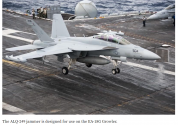Any country would have to have C4ISR capabilities relevant to the task of targeting ships at sea and extend and integrate this ASBM architecture as much as possible. The difficulty of aiming increases significantly with distance. The space ISR system refers to the means for target recognition, it is not merely a means of relaying missiles re-entering the atmosphere. The means of relaying missiles re-entering the atmosphere has been solved for decades. Simulating a task for the ISR constellation in space would be that as soon as an OTH radar locates a naval TF at 1,500 km, providing an "approximate" target position for the ISR satellites to begin searching a pre-determined area, the satellites could thus indicate more precisely the area where the targets are as soon as they are located, indicating a more precise coordinate for other ISR systems to select targets in real time. The only problem with this kill chain is that neither OTH radars nor satellites can offer the precision to hit a moving target, other means of reconnaissance are still needed to do this. The kill chain could work by "skipping" certain steps, for example, a drone carrying out a selected search for an opportunity could run the ASBM without the need for other kill chain processes; an OTH radar could indicate an areal location of a given target and send MPA aircraft to do maritime surveillance and so on.As for the strawman - "members claiming space based kill chain is all you need etc" I don't see anyone here claiming the absolute resilience of ASBM kill chains. Space based systems appear to be (at least speculated here in the past) one way to get around the plasma cloud as signals aren't completely cut off from re-entry vehicles. That is all. No one is claiming space based kill chain makes ASBM an invincible weapon. It is just that having a space based kill chain is something the US is yet to complete and India is yet to even begin.
The relevance of ISR architecture in space is necessary and will be extremely vital in the coming decades. See the US efforts to create an anti-hypersonic constellation in space, the fundamental of this system is that it will allow it to defend against this threat and at the same time suppress mobile launchers, which is in fact complicated to reach moving targets at these distances (interior of the China/Russia/North Korea), the Americans are in the process of migrating most of their ISR platforms to space but this will take two decades or more. Real-time reconnaissance capability deep within enemy territory is vital for long-range weapons against tactical and time-sensitive targets to work. That's why there's little point in the Americans rushing in with their hypersonic missiles that will be used against time-critical targets in the heart of enemy territory since today the US doesn't have the deep reconnaissance capability to make the kill chain work.
What's the point of having a missile like the CPS with a 4000 km range and Mach 17 speed capable of hitting a DF-26B launcher in the interior of China if the Americans don't know where the launcher is and where it will be at a given moment?
Every long-range engagement against mobile targets (moving or relocatable) requires a complex kill chain, which becomes more complex the deeper into enemy territory the targets are. And the kill chain becomes progressively more complex as the target is more protected, so a USN CSG is a heavily defended target, which makes it a difficult task to make an ASBM work correctly.
I just wanted to demonstrate that other countries follow this trend. It was not my objective to provide an in-depth analysis of all countries trying to achieve this capability.Oh you seem to have left out Iran from your list of ASBM wielding nations. Got there before India, using assumed similar levels of kill chain "capabilities". North Korea may or may not be in a similar position. Iranian MRBMs with MaRV at least can hit static ground targets with great accuracy. No one seems to have paid them much attention when they claimed to have ASBM based on those MaRV tech.

